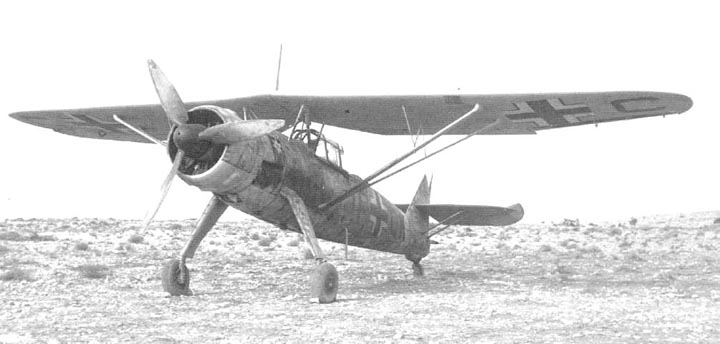LUFTWAFFE RESOURCE CENTER > TRANSPORT/UTILITY > PREVIOUS PAGE

|
Type: Army Co-operation;
later multi-role tactical Origin: Henschel Flugzeugwerke AG, Schönefeld Models: A and B Production: 800+ First Flight: August 1936 Service Delivery: A-0: June 1937 Final Delivery: January 1941 Powerplant: A-0: Bramo Fafnir 323A, 9-cyl. Radial Horsepower: 830hp A-1: BMW 132Dc, 9-cyl. Radial Horsepower: 880hp B: Bramo Fafnir 323A-2 or Q-2, 9-cyl. Radial Horsepower: 900hp Dimensions: |
Weights: (B-1) Empty: 2032kg (4,480 lb.) Loaded: 3270kg (7,209 lb.) Performance: Maximum Speed: 221 mph (355 kph) Cruise Speed: N/A Range (at sea level): 580km (360 miles) Initial Climb: N/A Service Ceiling: 27,070 ft. (8250m) Armament: Bomb Load: |
A development of the Hs 122, the Hs 126 proved to be a reliable and strudy aircraft with excellent STOL capabilities. Much like it's contemporary, the British Lysander, the Hs 126 proved to be very versatile and served in variety of roles including light recon, bombing and utility roles. Most of these machines were deployed on the Eastern front with the remainder being deployed to the Balkans and North Africa. Eventually these machines were replaced by the Fw 189 and they were then used for towing. By 1944-45 the remaining 200 or so survivors were deployed to the Nachtschlacht (night ground attack) wings.

Gunston, Bill & Wood, Tony - Hitler's Luftwaffe
LUFTWAFFE RESOURCE CENTER > TRANSPORT/UTILITY > PREVIOUS PAGE
